Holding It All Together
The other evening we had dinner with friends who talked about their recent travels in Switzerland, Germany, and Holland. Their tour centered on the 500-year anniversary of the beginning of the Anabaptist movement out of which Mennonites emerged. Our friends visited places where early Anabaptists were imprisoned, tortured, and killed, as well as places where they hid to escape capture. They talked about the breath-takingly beautiful Swiss countryside our ancestors were forced to flee, and how sad it must have been for them to lose their homeland.

After moving from one place to another, they made their way to North America in the early 1700s—Pennsylvania specifically. William Penn’s offer of land to purchase and freedom to practice their beliefs felt like a godsend to them.
My ancestors were part of that immigration. They began a new life on land they purchased from Penn and others, delighting in the rich soil and abundance of streams and rivers. It was ideal for farming, the work they were most familiar with. That is the story I have been told from childhood. This land and its freedom were a gift.
Now, to interject a brief side story: This past January, our Brooklyn son requested a tour for his family of historic family sites in Pennsylvania. Wayne and I spent weeks of planning—writing emails and making phone calls to cousins we rarely contacted, searching through old family pictures, looking at family papers and letters, driving down roads virtually using Google Maps, pouring over genealogical charts, searching online for information, and more.

And so, just days before the dinner with our friends, we had returned from that tour. As our friends talked about their musings on the losses of our ancestors, I realized that the thread of our just-completed family trip continued the narrative they had begun. We had visited places those displaced Swiss Anabaptists settled. We had seen houses some of them had lived in and the land they had farmed.
We spent a day visiting old and not so old houses from Wayne’s Amish and Amish-Mennonite background. The Nicholas Stoltzfus Homestead, on the outskirts of Reading, was bought by Wayne’s ancestor in 1771 after having several previous owners. The interior now offers glimpses of what life must have been like for this family around the time of the Revolutionary War.

The John Schucker homestead, also close to Reading, is now owned by the Wyomissing Parks and Recreation. To imagine the original structure, built in the early 1700s, we had to subtract mentally the add-ons of more recent times.
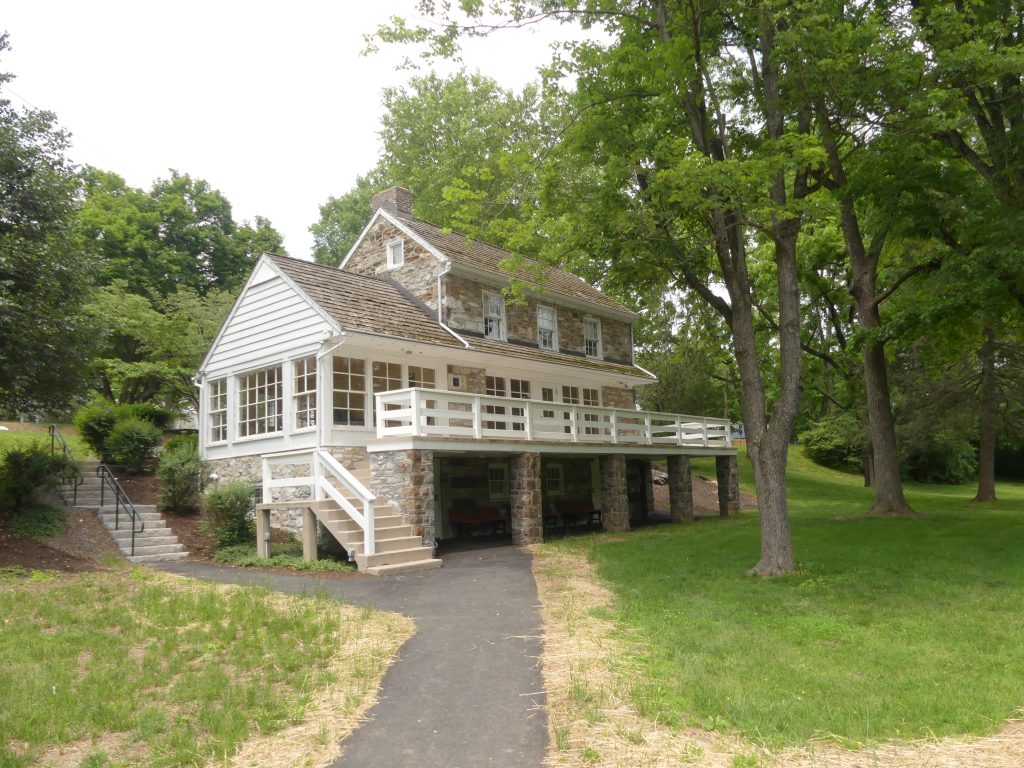
We drove past several old family farms and drove in the lane to the house where Wayne was born but have no current pictures of it. We also visited several cemeteries, looking through rows and deciphering lichen-covered names to find relatives’ graves.
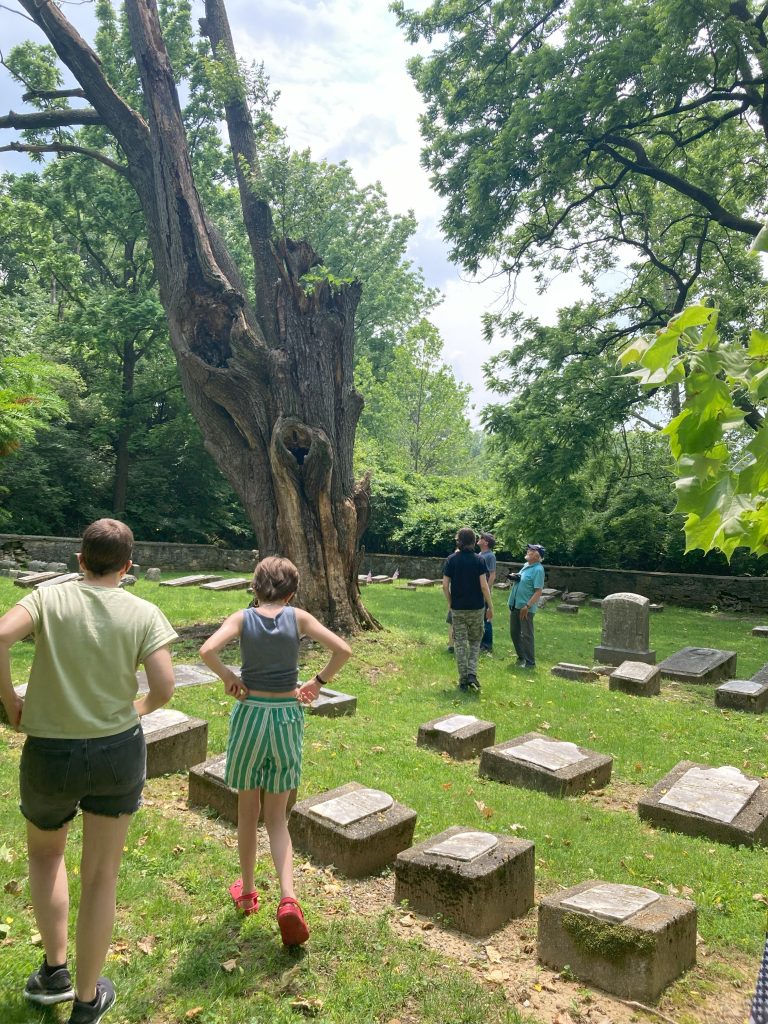
Then it was my turn. The Hans Herr House, near Millersville, is the oldest surviving European homestead in Lancaster County, built in 1719.
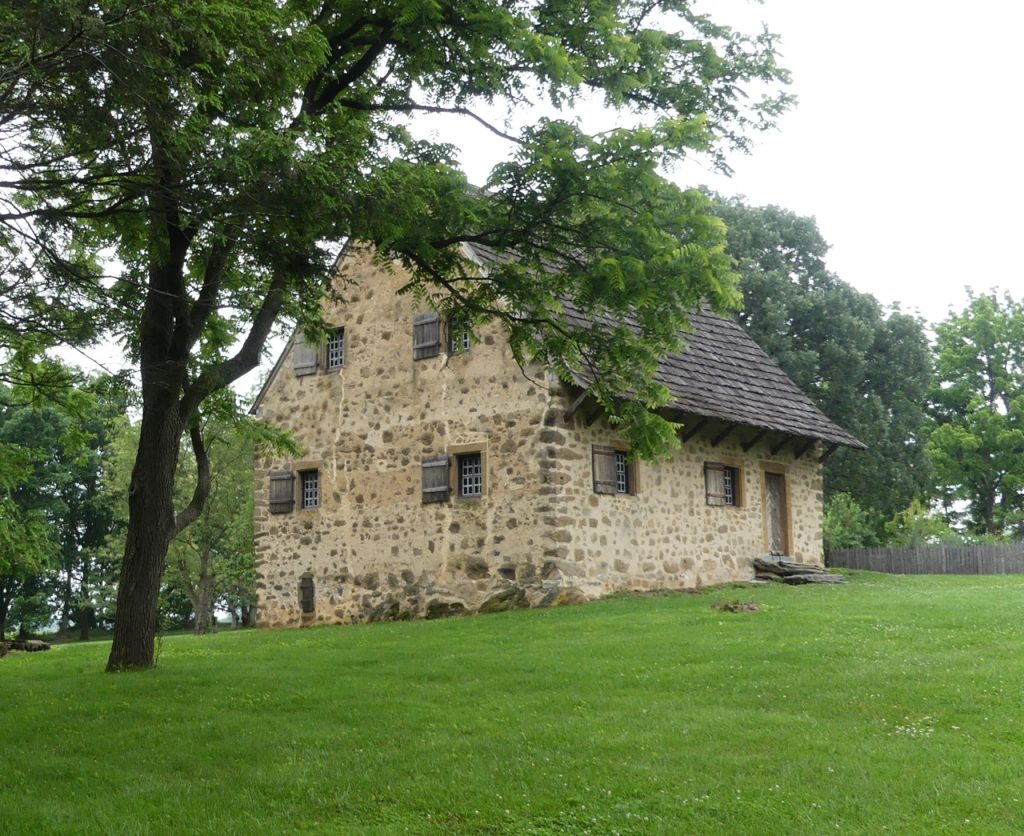
My grandfather, Chester K. Lehman, was born in the old stone house below, “in the Manor” (Manor Township). The estate-like grounds probably bear little resemblance to the outside spaces when it was a working farm, but I know that my great-grandparents and their children each wrote a poem about their home when they moved to Millersville. Clearly it was loved.
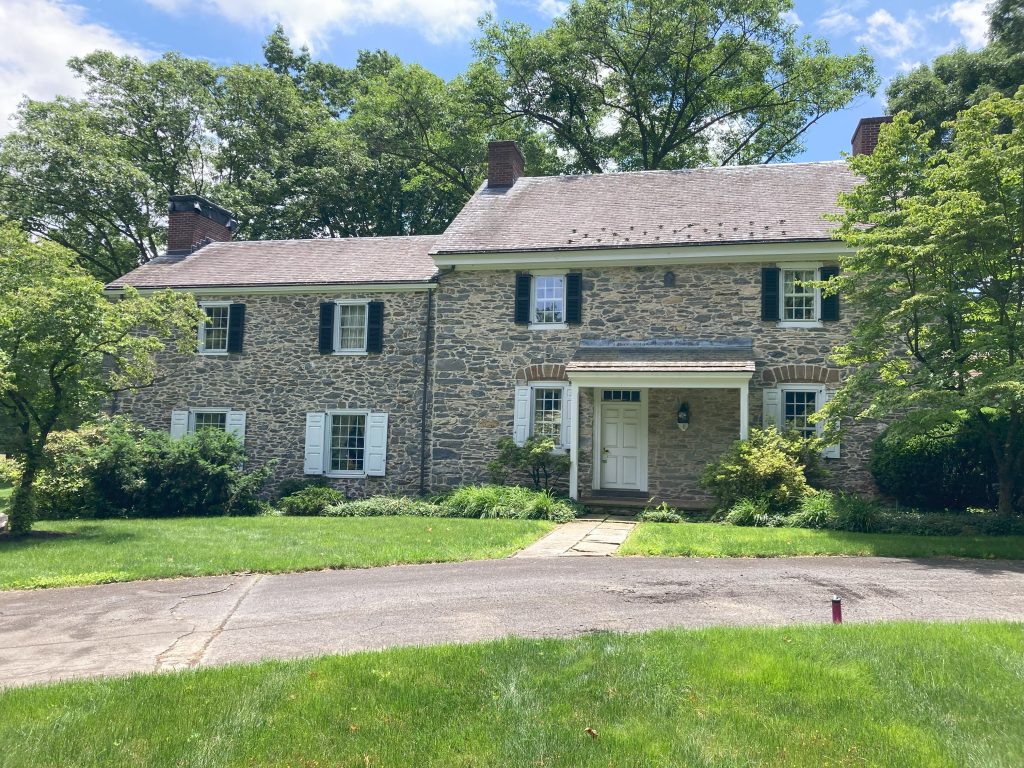
Next, was the farm where Grandpa spent his boyhood—now named “Buttonwood.” Again, it was a beautiful stone house in an estate-like setting that would have looked different as the working farm where Grandpa lived. One benefit my family had enjoyed, however, was boating and swimming (boys only) in the Little Conestoga that meandered through their farmland.
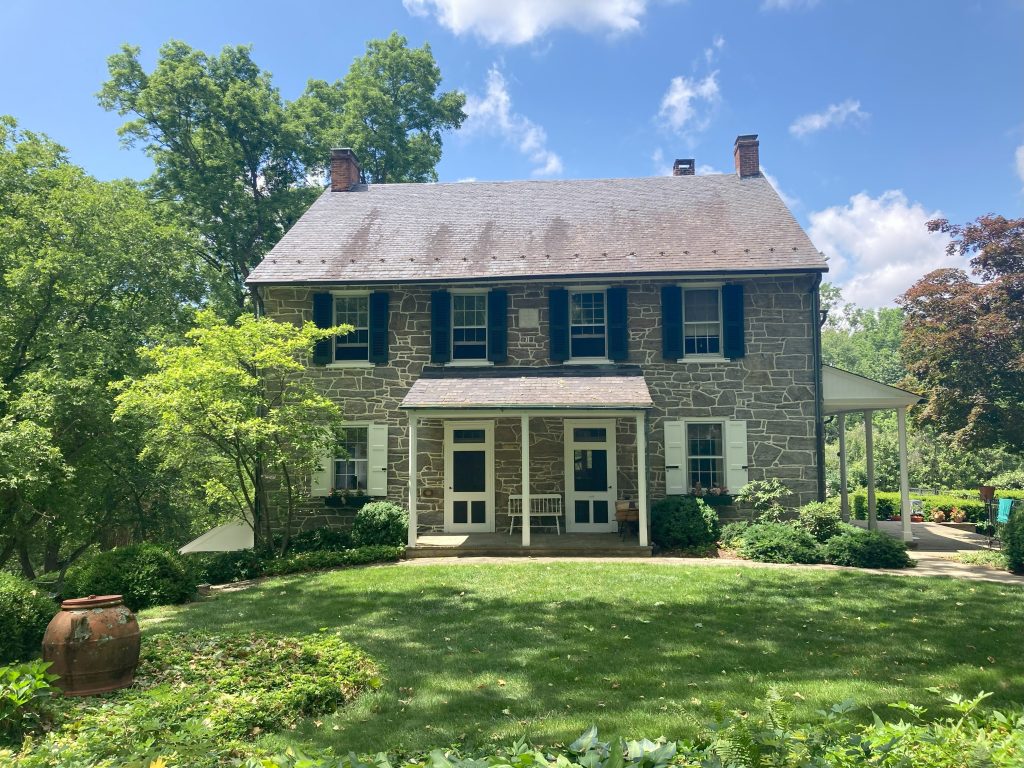
The farm that my maternal great-grandfather built looked less imposing, but was neat and trim complete with Victorian filigree on the front porch. We had the privilege of visiting with the owner who gifted me with pieces of cement in which my grandmother’s name had been written, well over 100 years ago.
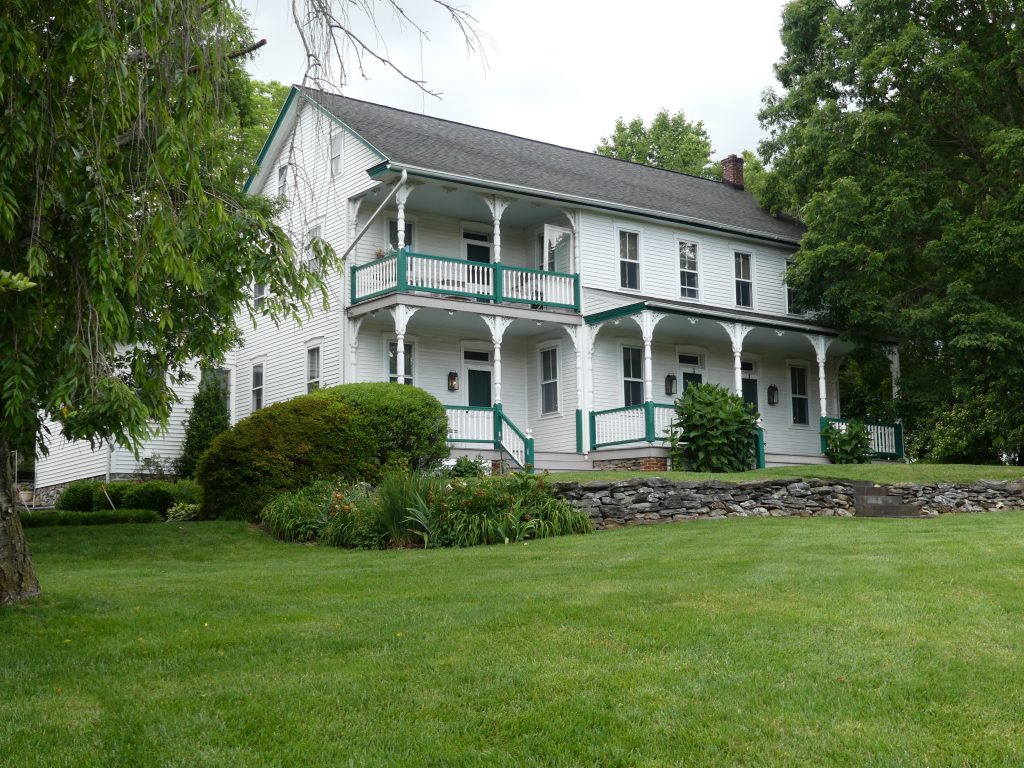
As we went through our days, I was focused on names and dates of my greats and great-greats. I wondered what life must have been like for them. I imagined them in their houses and on the land they farmed. I was not attempting to do a comprehensive history of the area, but I wondered too about those whose land my ancestors had claimed. How might the Indigenous people have viewed these strangers coming and “buying” land for a pittance, or simply laying claim to it? What did they think of the solid, permanent stone structures that we think are beautiful, built on land where they expected to come and go? How mixed was their relationship with the European settlers, even the “good” ones. Mennonites would not have shot at them, but they did bring diseases for which the Indigenous people had no resistance, resulting in the deaths of thousands.
At the Hans Herr House, recognition was made of the Indigenous people. A group of them had come and constructed a long house using traditional methods. The house and its furnishings were part of our tour, but I felt uneasy as our guide spoke in glowing terms about the good relationship between the Mennonites and the Native people. It sounded too much like an eager explanation of “good” or “kind” enslavers. When she talked about the horrific, unprovoked massacre by the Paxton Boys, she emphasized that they came from Harrisburg and were not local people. She had to admit though, when asked, that no charges were ever brought against these “Boys.”
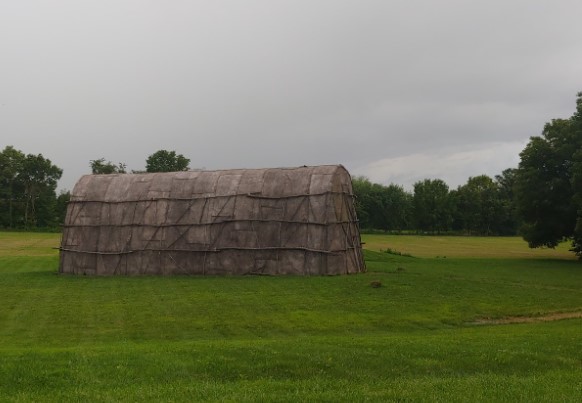
Those comments kept niggling in the back of my mind all day. How can I do this? How can I enjoy seeing beautiful houses, and rolling farmland; hearing birds in the trees and water flowing when I know this land was taken from its original inhabitants in grossly unfair ways? Yet how can I not enjoy the beauty around me, and the stories of those who gave me life through generations of conscientious living? How can I not enjoy seeing my grandchildren connecting with pieces of their history from which they have benefitted in significant ways? How can I face the devastation my ancestors brought to an entire population, pretty much without apology?
How can I hold all this together, the strength and goodness of past generations, along with the wrongs done to people who have all but disappeared from these particular landscapes? It isn’t as if they live next door, nor do I have any right to the land their ancestors lived on. I am grateful that my ancestors made attempts to live fairly with their Indigenous neighbors, but they bought land, not questioning how it had been acquired. In Europe they stood in oppose their rulers, and were even willing to die for their faith, but they were, for the most part, blind to the way their European-centric world view caused injustices in North America, injustices in which they participated.
This is a tension I need to live with–the positive values and the sins of my ancestors. There are no easy conclusion. Holding opposing realities together in my hands is uncomfortable. It is tempting to let go and walk away, holding only the easy truths. However, I believe that letting myself stand in the tension between opposites, makes space for creativity and newness to emerge, for deeper truths to come to light.
This is a phenomenal narrative Kathie. What a gift to your children and to all of us❣️
It was a gift to me as well. It isn’t often that I’ve been invited to delve into my family’s history, and that, juxtaposed with our friends’ European travels, felt like one continuous story. While I have thought of our ancestors’ part in appropriating land that didn’t come to them fairly, I had never been quite so acutely aware of the ironies that exist in our past.
Well done, as always. Yes, we must live with the issue, hard as it is. And the photography was well done! I also count Hans Herr as an ancestor–but what Menno cant?!
Thanks, Joseph. I can’t take credit for many of the pictures. Wayne tends to do more of that. And yes, I’m sure most of Lancaster Co. and beyond is connected to Hans Herr–I am at least 10 different ways, but Wayne isn’t at all. That is the difference between coming from Mennonite background vs. Amish background.
You did it! You pulled off the trip. Congratulations! Yes, the tensions remain for all of us. Thanks for sharing your experience of that.
Thanks, Evie, for your response. I’m really glad we did the trip. I think it’s one we will all remember, probably each for our own reasons, but that is okay. It was a good time together.